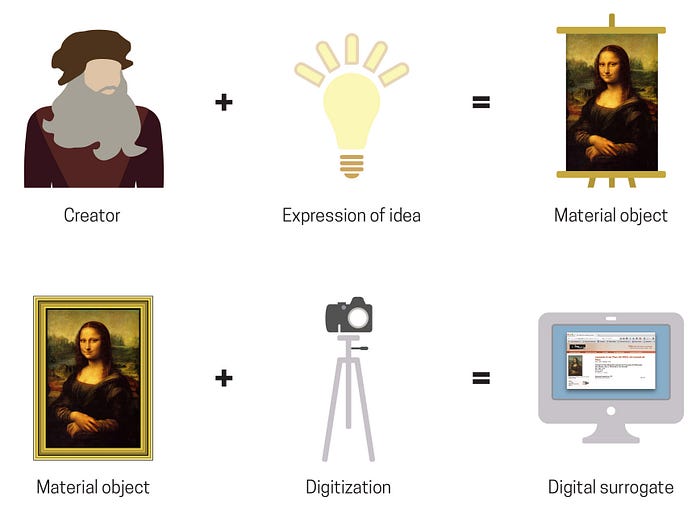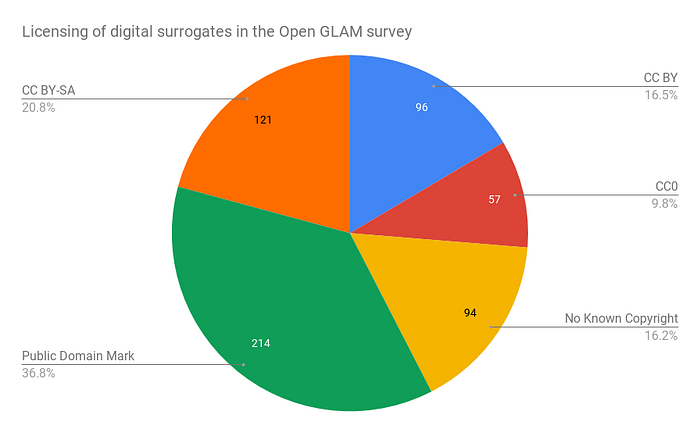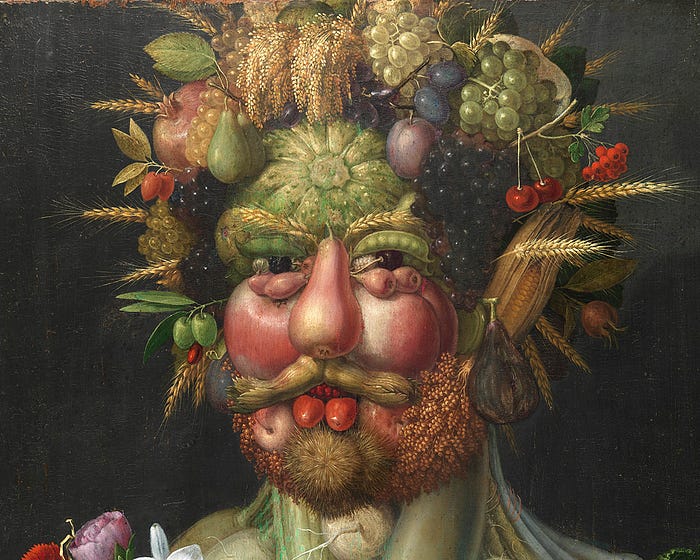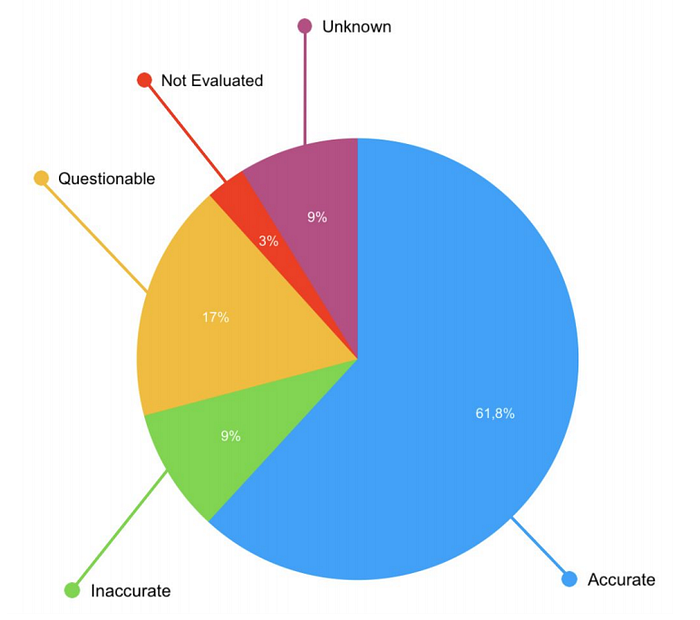
In spring 2018,Andrea Wallace and I set out to discover how many cultural heritage institutions make their digital collections available for free reuse and how they do this. In my second post in a series on the Open GLAM Survey, I examine licensing policy and practice in the field.
How Open GLAMs license digital surrogates of public domain objects
The Open GLAM survey adopts the term ‘digital surrogate’ as defined in the research-led exhibition experiment Display At Your Own Risk (Andrea Wallace and Ronan Deazley, 2016) and applies it to the wide spectrum of :
“‘Digital surrogate’ is used to refer to a digital reproduction of a material object, such as a painting or a sculpture. The reproduction, often a digital photograph, serves as a surrogate for the material object in the cultural institution’s collection. For the purposes of this exhibition, only surrogates of objects in the public domain have been chosen. This means any term of copyright for the material object has expired or never existed in the first place.”
Andrea Wallace and Ronan Deazley,Display At Your Own Risk, 2016

The Survey working definition of ‘open’ primarily follows Open Knowledge International’s Open Definition but also encompasses data published under the No Known Copyright statement and Flickr Commons ‘no known copyright restrictions’. Here are the most common licences adopted for digital surrogates:

To make the data easier to analyse and visualise, we consolidated different versions of the same licence in the Survey, for example the Creative Commons licences CC BY 2.0 and CC BY 4.0 are displayed singly as CC BY (column G).
When an institution uses a domestic licence (like France’s Licence Ouverte) or one designed on an institutional basis, the Survey captures this licence andits nearest equivalent (in the adjacent column H) to make cross-survey analysis easier.

Various national laws falling under copyright and related rights can impact whether and how GLAMs are able to make collections data available online. These laws might govern the term of copyright (and thus its expiration) and moral rights, the treatment of orphan works, or even recognise related rights in non-original content or a database.
GLAMs must therefore undertake a careful risk assessment before making decisions on how they license collections in relation not only to the digital surrogates and associated metadata, but also the underlying material works. The Survey does not capture these nuances but it is important that they are acknowledged.
How Open GLAMs license metadata (or don’t)
Simply put, metadata is data that provides information about other data. In the GLAM sector, how institutions define, classify and structure metadata is highly complex and varied.
Here are the most common licences adopted for metadata:
Almost 60% of institutions in the Survey apply the Creative Commons CC0 Public Domain Dedication to their metadata. The prevalence of CC0 here is influenced by the many Europeana-aggregated institutions in the Survey; it is mandatory for Europeana data providers to submit metadata under CC0. It’s worth noting that many of these institutions do not display a CC0 dedication for metadata on their own websites.
In the Survey overall, more than a third of surveyed institutions lack a rights statement for metadata. This suggests that GLAM institutions pay less attention to the rights management of metadata than of digital objects.
In contrast, The Cleveland Museum of Art’s Open Access Initiative includes an expansive vision of collections metadata and its utility as open data:
“Open access to. over 35 fields of metadata, including descriptive text and provenance… enables users to explore the context of artwork at new levels, something not possible with other initiatives that limit metadata open access to identifying or ‘tombstone’ data. Descriptive text is often where connections are discovered and meaning is found for works of art.”
‘Open Access arrives at The Cleveland Museum of Art’, interview with Jane Alexander on Europeana Pro, 23 January 2019

On licensing accuracy
Beneath the patchwork of rights statements seen in the Survey lies concern about the accuracy of licensing practice in the GLAM sector.
2018 research by Judith Blijden suggests that GLAMs frequently misapply rights statements in relation to the underlying work. This is because an institution must consider (at least) twolayers of rights management when making collections available, as demonstrated by the digital surrogates infographic above. This includes any rights in the material work in addition to rights arising in the digital surrogate and associated metadata. For example, where the underlying work is still rights-protected, this must be reflected in the licence for the digital surrogate.
Taking a representative sample of digital objects in Europeana, Blijden’s research indicated that a significant minority had rights statements of questionable accuracy:

According to Blijden, the reasons for this included the lack of rightsholder consent, incorrectly applied copyright terms and ineligible assertion of copyright on metadata.
It seems probable that such inaccuracy is a wider issue in the GLAM sector. The downstream risks for creators, institutions and users include false copyright claims (so-called ‘copyfraud’), infringement and restricted access to the public domain. In Europe, one hopes that the European Parliament’s adoption of the Directive on Copyright in the Digital Single Market may provide welcome clarification for GLAM licensors and the citizens they serve.